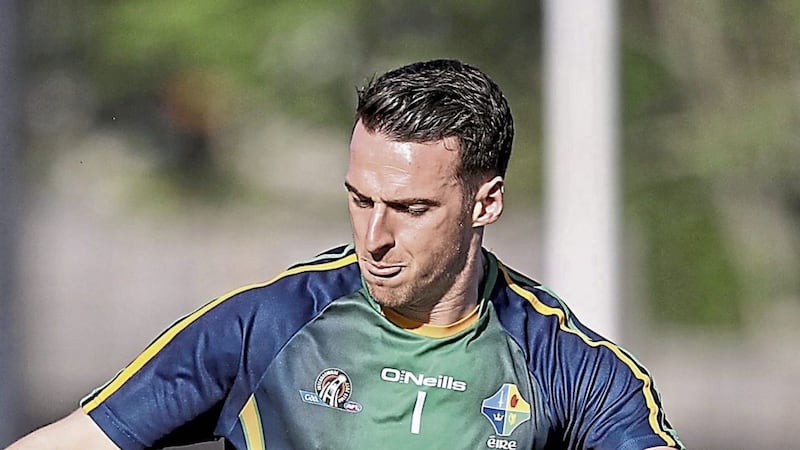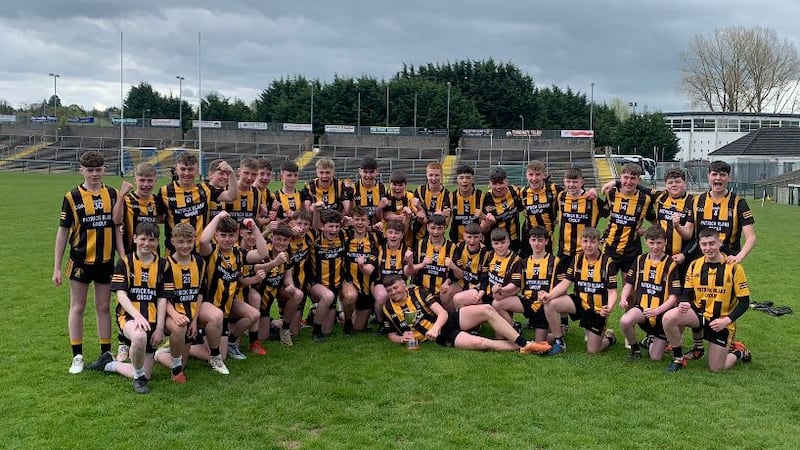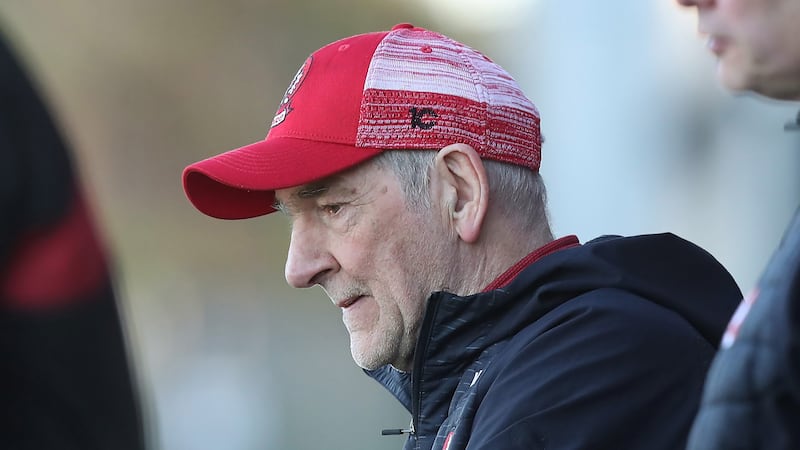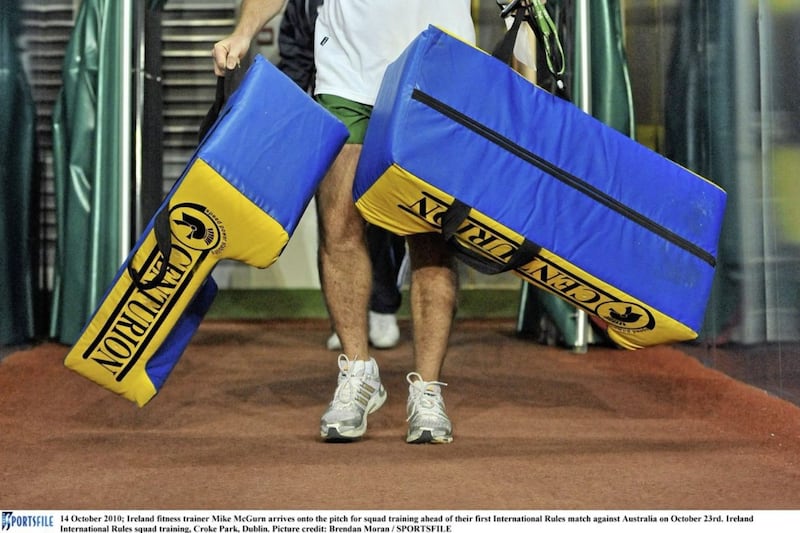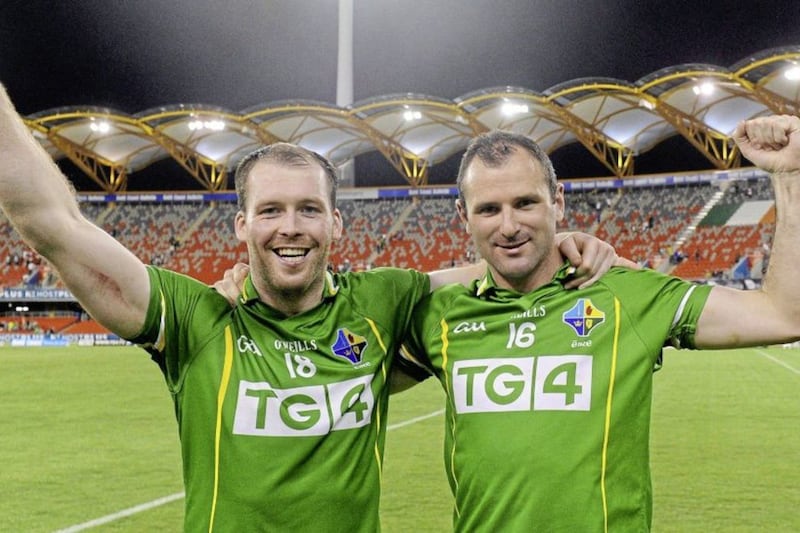AS always seems to be the way, the entire premise of the International Rules is sitting on a knife edge, with any number of factors ready to inflict the terminal wound.
For a sport that created its greatest interest when both sets of players were literally at war, the Australians crossing the line in 2005 signalled a change that has both cleaned it up and almost killed it off.
Whether it’s a promotional tool or a thinly-veiled threat that they intend to carry through, Chris Scott’s men have all week been openly discussing their intentions to literally bully Ireland out of it.
Should that manifest itself as it did 12 years ago then the curtain could come down on it all. But equally, the trash-talking will have been worth it if things stay between the hedges and it succeeds in attracting a big crowd in Adelaide.
It’s unlikely, however, to have much impact at home, where the 5.10am throw-in time is an unfortunate by-product of the attempt to arrest poor Sunday evening attendance at past tests.
Still and all, hopes of that are not particularly high on that front but attendance at the hybrid series, particularly Down Under, has always been dependent on walk-ups on the day.
The good weather and the prospect of a physical encounter may lift the south-eastern city out of its post-Grand Final slump, where the local side lost to underdogs Richmond.
When you look at the physical make-up of the Australian squad, it’s easy to see why they are bullish about their physical advantage.
Just five of their 21-man group stand below six foot. The lively Eddie Betts, who stood out two years ago and whom Joe Kernan has pinpointed as a particular threat, is 5’9”.
He called upon friends in midweek to get a proper go at the round ball, calling out to play in a 7-a-side Gaelic football tournament at St Mary’s, where he scored 1-4 from play.
Rory Laird (5’10”), Dayne Zorko (5’9”), Zach Merrett (5’11”) and Neville Jetta (5’11”) are the only others who don’t break the 6’ barrier.
In big names like Patrick Dangerfield, Nat Fyfe and Scott Pendlebury, there are obvious threats from the footballing and physical perspective, but even they are dwarfed by the likes of ruckmen Ben Brown (6’7”) and Paddy Ryder (6’6”), who are likely to have a big impact on breaking ball.
It’s an area that Ireland have been conscious of since they first began weekly Friday night training sessions in Croke Park back in September.
When the Aussies squeezed up on the Irish kickout two years ago, and the ball having to pass the 45-metre line by law, Niall Morgan (inset) had nowhere to go.
Kernan has loaded his squad with plenty of fetching ability in a bid to counteract that. Aidan O’Shea, Gary Brennan, Kevin Feely and Niall Grimley are the primary midfield options.
Michael Murphy is expected to give Donegal fans a tantalising taste of what might be by starting at full-forward, and his understanding with Conor McManus stood out during an in-house game in midweek.
But Chris Scott is not short of big men to try and deal with Murphy. They will feel either Michael Hibberd or Robbie Tarrant have the physical wares to take on Glenswilly’s finest.
In terms of scoring power, Ireland’s round ball advantage has rarely manifested itself in past series’. Despite the Australians’ unfamiliarity with it, they have kicked more overs (a point in Gaelic football) in 13 tests since 1998. That compares with 11 for Ireland, a figure skewed by the 2011 and 2013 series’ for which the Aussies fielded severely weakened teams.
But Ireland have won tests and series’ based on their obsession with six-point goals (or unders, as they are here). Weakened or not, in the last six tests Australia have raised just five green flags compared to 18 for Ireland.
In every facet, though, this is the strongest Australian squad in quite a while. While a handful are not All-Australians, all 21 squad members have been shortlisted.
The two notable absentees are 2017 Brownlow Medal winner Dustin Martin, and two-time winner of the AFL equivalent of Player of the Year, Gary Ablett, who withdrew from the squad for personal reasons earlier this week. They only got together for the first time when they arrived in Adelaide on Thursday morning, and that short window and unfamiliarity with the ball would ordinarily offer an opportunity for Ireland to get a head-start. However, the weather conditions are very much weighted in favour of the hosts. Ireland struggled with 31 degree heat on Friday, taking six water breaks and cutting their session short.
The mercury is set to hit 34 tomorrow at what will be late afternoon in the Adelaide Oval, which this week has been playing host to the cricketers of England and Australia as they work towards the Ashes next month.
If it hosts an Irish victory tomorrow then it will have been a serious performance from the men in green. If the bug victims – Niall Murphy, Enda Smith and Pearce Hanley – can recover to fully contribute, and Ireland can arrest long-running issues with the interchange system, then even minus the Dubs the quality is there to push this all the way.
And just as with two years ago, competitiveness from both ends will be enough to keep it all back from the precipice. Until next week, anyway.
